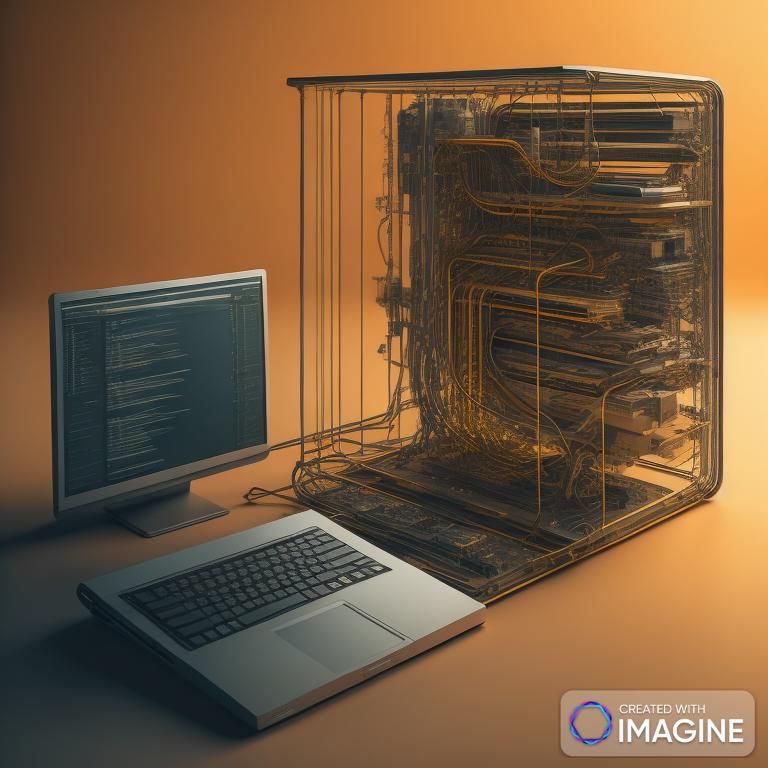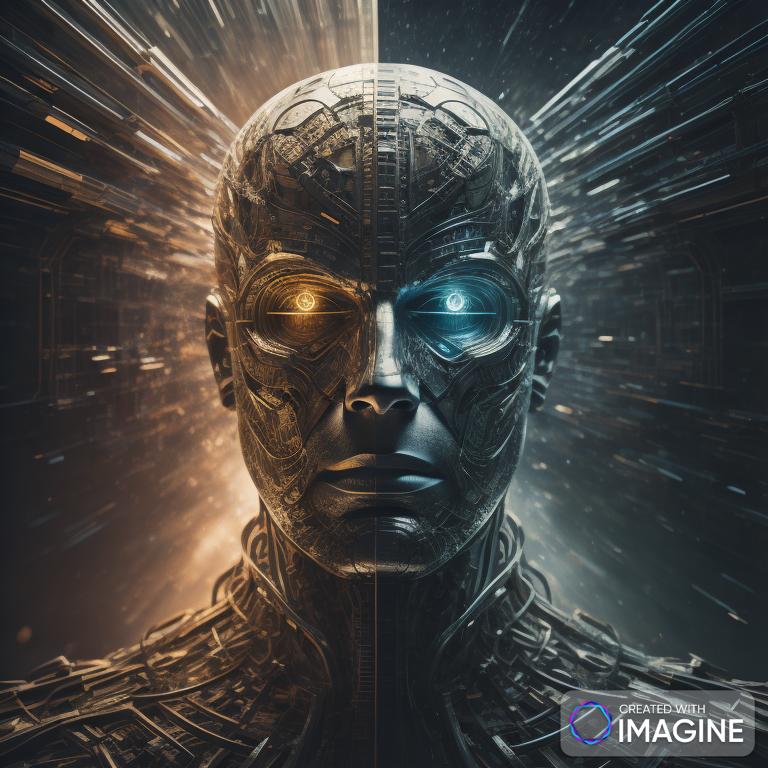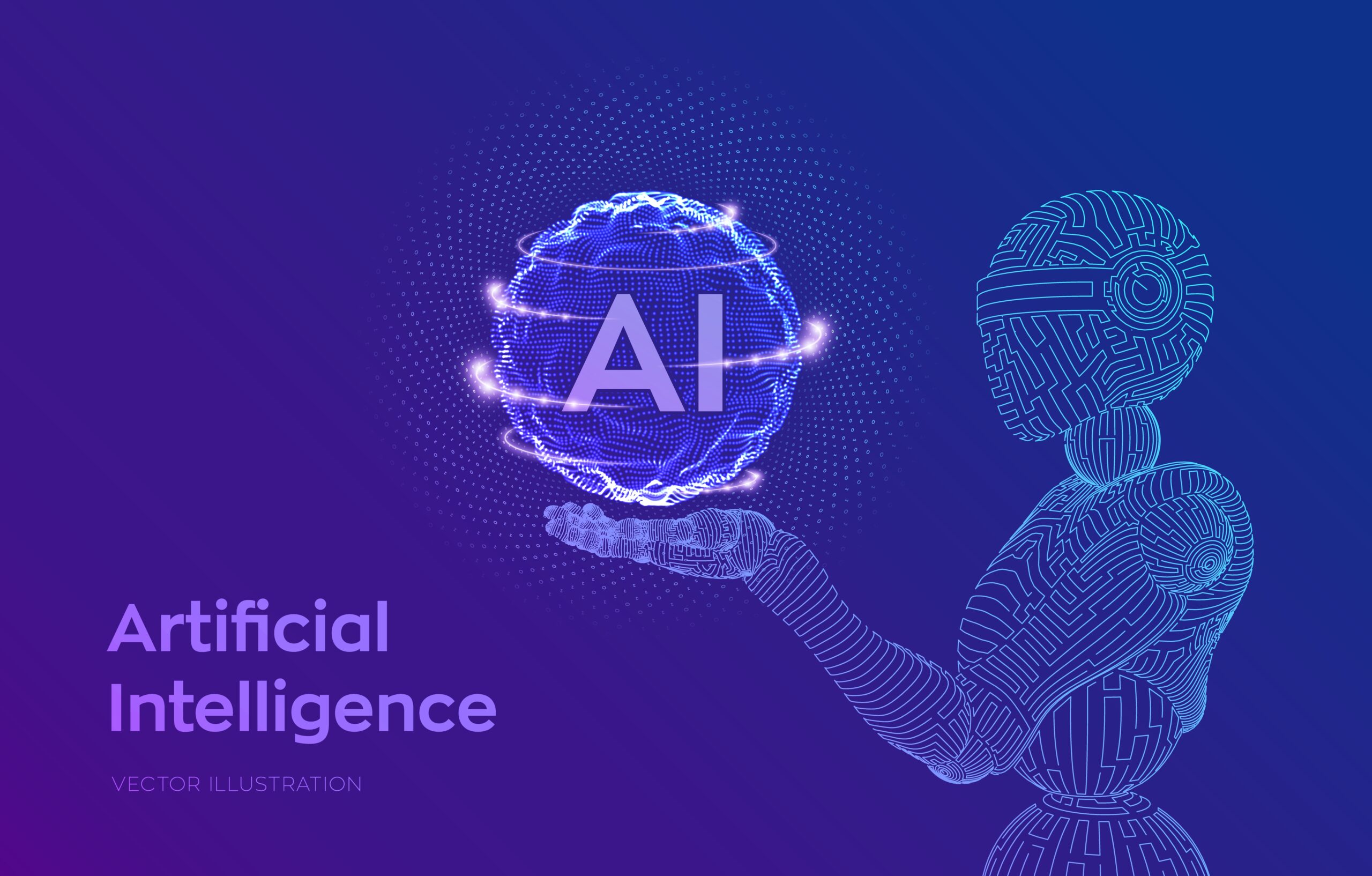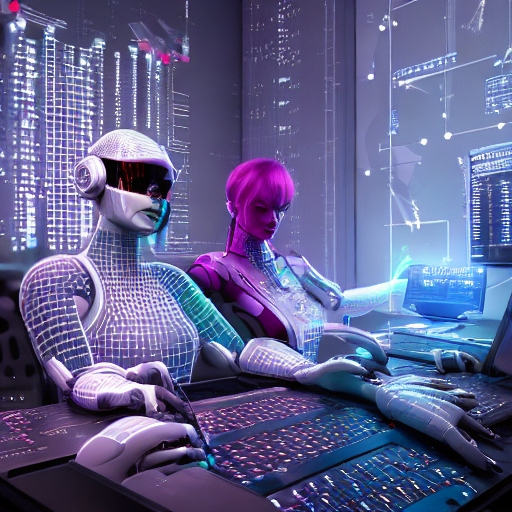In the field of artificial intelligence (AI), the terms “environments” and “agents” are fundamental concepts that are often used in the context of reinforcement learning. Let’s define each term:
Environment:
- In AI, an environment refers to the external system or context in which an agent operates. This could be a physical space, a simulated world, or any setting where the agent interacts to achieve its objectives. Environments define the conditions and constraints that influence the agent’s decision-making and learning processes.
- Agent:
- An agent is an entity that operates within an environment. It could be a software program, a robot, or any system capable of perceiving its environment, making decisions, and taking actions. Agents are designed to achieve specific goals or tasks, and they learn and adapt to their environment over time.
- The number of environments and agents in AI can vary widely depending on the application and context. Here are a few scenarios:
- Single-Agent Environments:
- In some AI applications, there is only one agent interacting with a given environment. For example, a simple game-playing AI where a computer-controlled character navigates a virtual environment.
- Multi-Agent Environments:
- In other cases, there are multiple agents operating within the same environment. This is common in scenarios like multi-agent systems, where several agents collaborate or compete to achieve their goals. Examples include traffic management systems, economic simulations, or multi-player games.
- Single-Environment, Multi-Agent Systems:
- In certain situations, multiple agents may interact within a shared environment. Each agent may have its own objectives, and their actions can influence each other. This is often seen in collaborative robotics or scenarios where multiple AI systems need to coordinate.
- Multi-Environment Systems:
- In more complex setups, there might be multiple environments, each hosting one or more agents. This could represent interconnected systems or diverse scenarios that agents need to navigate. For instance, a drone surveillance system may have agents operating in various environments like urban areas, forests, or industrial sites.
- Dynamic Environments:
- Environments can be static or dynamic. In dynamic environments, the conditions or state of the environment change over time. This introduces additional complexity for agents, requiring them to adapt to evolving circumstances. Examples include real-time strategy games where the game world changes based on player actions.
- Stochastic Environments:
- Stochastic environments involve randomness or uncertainty in their outcomes. Agents operating in stochastic environments must account for this uncertainty in their decision-making processes. Financial markets or certain aspects of natural language processing can exhibit stochastic behavior.
- Deterministic Environments:
- In contrast to stochastic environments, deterministic environments have predictable outcomes for given actions. This allows agents to precisely model the consequences of their actions. Examples include chess games, where each move leads to a known state.
- Cooperative Agents:
- In cooperative multi-agent systems, agents work together to achieve a common goal. This collaboration may involve communication and coordination among agents. Applications include robotics teams working on a shared task or collaborative problem-solving scenarios.
- Competitive Agents:
- In competitive multi-agent systems, agents compete for resources or rewards. This could be seen in scenarios like competitive games, financial trading, or bidding systems where agents aim to outperform others.
- Adversarial Environments:
- Adversarial environments involve entities (adversaries) actively trying to impede the progress of agents. Cybersecurity is an example, where agents defend against adversarial attacks or attempt to outsmart malicious agents.
- Continuous State Spaces:
- Environments may have continuous state spaces, meaning the possible states are not discrete but exist on a continuum. Agents operating in such environments often require techniques from continuous control theory. This is common in robotics applications.
- Discrete Action Spaces:
- Similarly, action spaces can be discrete or continuous. In discrete action spaces, agents choose from a finite set of actions. This is typical in board games or decision-making scenarios with limited, distinct choices.
- Simulation Environments:
- Simulation environments replicate real-world scenarios in a controlled setting. This is common in training AI models for tasks like autonomous driving, where agents learn to navigate virtual environments before deployment in the real world.
- Transfer Learning Across Environments:
- Agents trained in one environment may need to adapt their knowledge to perform well in a different, but related, environment. Transfer learning techniques enable agents to leverage previously acquired skills when faced with new challenges.
- Hierarchical Agents:
- Hierarchical reinforcement learning involves organizing agents into multiple levels of abstraction. Higher-level agents make decisions at a broader level, guiding the actions of lower-level agents. This can enhance the efficiency and scalability of learning in complex environments.
- Human-in-the-Loop Systems:
- Some AI systems involve human agents interacting with the environment. This can include collaborative robots working alongside humans or AI systems designed to assist and augment human decision-making.
- Evolutionary Algorithms in Dynamic Environments:
- Evolutionary algorithms, inspired by natural selection, can be applied to train agents in environments that undergo continuous changes. This approach allows agents to adapt to evolving conditions over successive generations.
- Sparse Rewards in Reinforcement Learning:
- In reinforcement learning, the reward structure of an environment plays a critical role. Environments with sparse rewards provide feedback infrequently, making it challenging for agents to learn. Techniques such as reward shaping or intrinsic motivation can help address this challenge.
- Non-Stationary Environments:
- Non-stationary environments undergo changes in their underlying dynamics over time. Adapting to such environments requires agents to continuously update their models and policies. This is relevant in scenarios where external factors influence the environment’s behavior.
- Ephemeral Environments:
- Some environments are ephemeral, meaning they exist for a brief duration. This could include scenarios like disaster response simulations or certain gaming environments. Agents in such environments must quickly adapt and make decisions within a limited timeframe.
- Memory and Stateful Agents:
- Agents equipped with memory capabilities can retain information about past states and actions. This is particularly important in tasks that require a sense of context or involve sequences of actions, such as natural language processing or video game playing.
- Temporal Difference Learning:
- Temporal Difference (TD) learning is a technique commonly used in reinforcement learning where agents update their knowledge based on the difference between predicted and observed rewards over time. TD learning is effective in handling sequential decision-making tasks.
- Model-Based vs. Model-Free Learning:
- In reinforcement learning, agents can be categorized as model-based or model-free. Model-based agents build an internal model of the environment to plan actions, while model-free agents directly learn optimal policies. The choice depends on the nature of the task and available information.
- OpenAI Gym Environments:
- OpenAI Gym provides a toolkit for developing and comparing reinforcement learning algorithms. It offers a variety of environments that researchers and practitioners can use to benchmark and test their algorithms, ranging from classic control tasks to more complex challenges.
- Transferable Skills Across Agents:
- In multi-agent systems, transferable skills refer to the ability of an agent to apply knowledge gained in one context to a different but related task. Developing agents with transferable skills can enhance their adaptability in various scenarios.
- Ethical Considerations in AI Agents:
- As AI agents become more prevalent in decision-making processes, ethical considerations become paramount. Designing agents that prioritize fairness, accountability, and transparency is crucial to avoid reinforcing biases or causing harm.
- Biological Inspiration for Agents:
- Bio-inspired AI draws inspiration from biological systems to design intelligent agents. Neural networks, for example, are inspired by the structure and function of the human brain. Understanding biological principles can inform the development of more sophisticated learning algorithms.
- Online Learning Environments:
- Online learning environments involve agents adapting to new data as it arrives sequentially. This is common in applications like streaming data analysis or adaptive systems that must continuously update their knowledge.
- Meta-Learning:
- Meta-learning involves training agents to learn how to learn. Meta-learning frameworks enable agents to quickly adapt to new tasks or environments by leveraging prior learning experiences. This is particularly valuable in dynamic and rapidly changing scenarios.
- Quantum Agents:
- With the emergence of quantum computing, there’s ongoing exploration of quantum agents that leverage the principles of quantum mechanics to perform computations. Quantum agents may offer advantages in certain optimization and simulation tasks.
- Human-Agent Collaboration in Environments:
- AI agents designed for collaboration with humans must be capable of understanding and responding to human actions and intentions. Human-agent collaboration is crucial in fields like assistive technology, where AI supports human users.
- Resource Allocation in Multi-Agent Systems:
- Multi-agent systems often involve competition for limited resources. Agents must learn efficient strategies for resource allocation, whether it be in economic settings or shared robotic environments.
- Adaptation to Unseen Environments:
- AI systems may need to operate in environments that were not encountered during training. Developing agents that can adapt to unseen environments involves techniques such as domain adaptation and transfer learning.
- Fault-Tolerant Agents:
- In safety-critical applications, agents must be designed to handle unexpected failures or errors gracefully. Building fault-tolerant agents involves incorporating mechanisms to detect and recover from anomalies in the environment or within the agent itself.
- Swarm Intelligence:
- Swarm intelligence involves coordinating large numbers of relatively simple agents to solve complex problems. Examples include ant colony optimization or drone swarms, where collective behavior emerges from the interactions of individual agents.
- Evolutionary Computation:
- Evolutionary computation algorithms, inspired by the process of natural selection, can be employed to optimize agent behavior over successive generations. Genetic algorithms and genetic programming are examples of evolutionary approaches used in AI.
- Cognitive Load in Human-Agent Interaction:
- When AI agents interact with humans, it’s essential to consider the cognitive load imposed on users. Agents should provide information in a way that is easily digestible, minimizing the mental burden on users during decision-making.
- Transfer Learning Across Agents in Multi-Agent Systems:
- In multi-agent systems, the ability of one agent to transfer knowledge to another can enhance the overall performance of the system. This can be achieved through communication, imitation learning, or shared representations.
- Learning from Demonstration:
- Learning from Demonstration (LfD) involves training agents by observing and imitating human demonstrations. This approach is useful when direct reward signals are sparse or challenging to define, such as in robotics or autonomous vehicles.
- Intrinsic Motivation in Reinforcement Learning:
- Intrinsic motivation involves providing agents with internal rewards to encourage exploration and learning. Agents with intrinsic motivation can exhibit more robust learning behavior, especially in complex and unknown environments.
- Resilience to Adversarial Attacks:
- AI agents, especially those deployed in security-sensitive applications, should be resilient to adversarial attacks. Techniques like adversarial training and robust optimization aim to enhance an agent’s ability to withstand intentional manipulations of input data.
- Bayesian Agents:
- Bayesian agents incorporate probabilistic reasoning in decision-making. These agents update their beliefs based on new evidence, making them well-suited for tasks that involve uncertainty and incomplete information.
- Imitation Learning and Apprenticeship Learning:
- Imitation learning involves training agents by observing expert demonstrations. Apprenticeship learning extends this concept by allowing agents to learn from both expert demonstrations and trial-and-error experiences.
- Coevolution in Multi-Agent Systems:
- Coevolutionary algorithms involve the simultaneous evolution of multiple populations in a dynamic interplay. This can be applied to scenarios where the fitness of one agent is dependent on the actions or strategies of other coevolving agents.
- Neuroevolution:
- Neuroevolution combines neural networks and evolutionary algorithms. Instead of traditional gradient-based learning, neuroevolution optimizes neural network structures and weights using evolutionary principles.
- Symbiotic Autonomous Systems:
- Symbiotic autonomous systems involve the collaboration of AI agents and autonomous entities (e.g., robots, drones) in a mutually beneficial relationship. Such systems aim for seamless integration and cooperation between biological and artificial agents.
- Reinforcement Learning with Human Feedback:
- Integrating human feedback into the reinforcement learning process allows agents to learn from human preferences and corrections. This can enhance the efficiency of training and ensure alignment with human values.
- Temporal Abstraction in Hierarchical Agents:
- Temporal abstraction involves representing actions and decisions at different levels of granularity over time. Hierarchical agents use temporal abstraction to organize complex tasks into manageable subtasks, facilitating more efficient learning.
- Ephemeral Agents in Edge Computing:
- Ephemeral agents can be deployed on edge devices with limited resources. Designing lightweight and efficient agents is crucial for applications in edge computing, where computational power and energy consumption are constrained.
- Generative Adversarial Networks (GANs) for Agents:
- GANs, originally developed for image generation, can be adapted for agent training. GANs can generate realistic simulated environments, providing diverse training scenarios for agents in reinforcement learning.
- Federated Learning with Distributed Agents:
- In federated learning, agents collaboratively train a shared model across decentralized devices. This approach is relevant in applications where data privacy is a concern, as learning occurs locally without centralizing sensitive information.
- Ethical Decision-Making Agents:
- As AI agents become increasingly involved in decision-making processes, ensuring ethical behavior is crucial. Ethical decision-making agents should align with ethical principles, avoid biased outcomes, and prioritize fairness and transparency.
- Understanding the intricate details and emerging trends in the relationship between environments and agents is essential for advancing the capabilities and ethical considerations of artificial intelligence systems. The continuous exploration of these aspects contributes to the development of more intelligent, adaptive, and responsible AI technologies.







